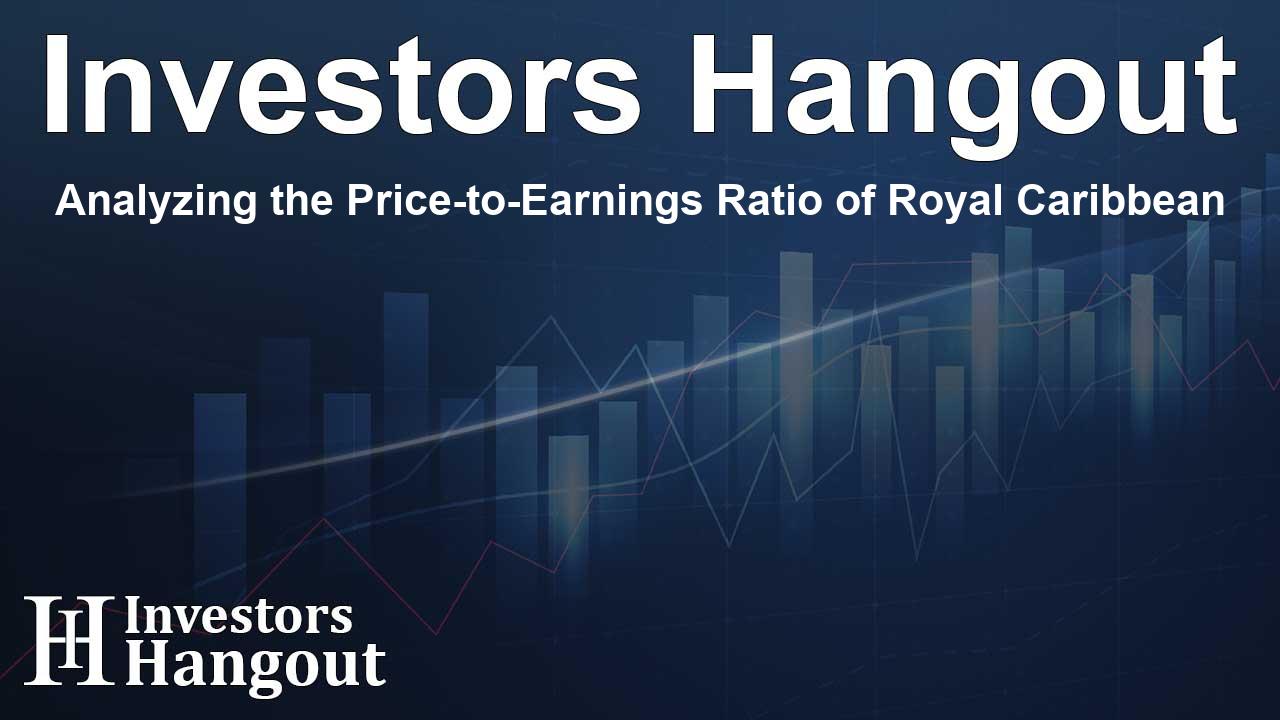Analyzing the Price-to-Earnings Ratio of Royal Caribbean

Understanding Price-to-Earnings Ratio for Royal Caribbean
Royal Caribbean Group, trading at $337.18, has recently observed a modest increase of 0.84%. In the past month, the stock rose by 1.75%, and over the past year, it has surged by an impressive 124.05%. Such robust performance has instilled confidence in long-term shareholders. However, the focus often shifts to the price-to-earnings (P/E) ratio, a critical tool for assessing stock valuation and potential overvaluation of Royal Caribbean Group (NYSE: RCL).
Evaluating the Significance of P/E Ratio
The P/E ratio serves as a vital indicator for investors, offering insights into the company’s market performance compared to historical averages and industry benchmarks. A P/E ratio below the average may suggest undervaluation or inadequate growth prospects expected by the market.
Current P/E Ratio Analysis
For Royal Caribbean Group, the current P/E ratio stands at 24.86, which is notably lower than the industry average of 36.25 in the Hotels, Restaurants & Leisure sector. This disparity could lead shareholders to ponder whether the stock is undervalued or if it signals underperformance compared to industry competitors.
Contextual Insights for Investors
While the P/E ratio is a useful starting point for valuation, it is not an exhaustive measure. Investors should consider various other financial metrics and qualitative factors—such as market trends and economic conditions—that can influence the company’s stock prices. The P/E ratio alone may not provide a comprehensive view of future growth potential.
Broader Market Trends Affecting Royal Caribbean
Given the evolving landscape of the cruise industry, trends play a pivotal role. Travel demand has started recovering, and more consumers are planning vacations, which could enhance Royal Caribbean's revenue. The company's strategic decisions and marketing efforts can further propel its market position.
Conclusion: A Multi-Faceted Investment Approach
In summary, the price-to-earnings ratio remains a vital tool for stakeholders analyzing Royal Caribbean Group. Nonetheless, it is essential to weigh it alongside other financial metrics and broader industry trends. This holistic analysis can empower investors to make more informed decisions.
Frequently Asked Questions
What does the P/E ratio indicate for Royal Caribbean Group?
The P/E ratio reflects the market's expectations of a company's future performance and its relative valuation compared to industry peers.
How does Royal Caribbean's P/E compare with its industry?
Royal Caribbean's P/E is 24.86, lower than the industry average of 36.25, suggesting it may be undervalued.
What other metrics should I consider aside from P/E?
Investors should examine metrics like revenue growth, profit margins, and cash flow, coupled with broader market trends.
How can market trends impact Royal Caribbean's performance?
Increasing travel demand may improve Royal Caribbean's revenue, suggesting growth potential in an expanding market.
What is the significance of having a lower or higher P/E ratio?
A lower P/E might indicate undervaluation or poor growth prospects, while a higher P/E could suggest high growth expectations from investors.
About The Author
Contact Thomas Cooper privately here. Or send an email with ATTN: Thomas Cooper as the subject to contact@investorshangout.com.
About Investors Hangout
Investors Hangout is a leading online stock forum for financial discussion and learning, offering a wide range of free tools and resources. It draws in traders of all levels, who exchange market knowledge, investigate trading tactics, and keep an eye on industry developments in real time. Featuring financial articles, stock message boards, quotes, charts, company profiles, and live news updates. Through cooperative learning and a wealth of informational resources, it helps users from novices creating their first portfolios to experts honing their techniques. Join Investors Hangout today: https://investorshangout.com/
The content of this article is based on factual, publicly available information and does not represent legal, financial, or investment advice. Investors Hangout does not offer financial advice, and the author is not a licensed financial advisor. Consult a qualified advisor before making any financial or investment decisions based on this article. This article should not be considered advice to purchase, sell, or hold any securities or other investments. If any of the material provided here is inaccurate, please contact us for corrections.
